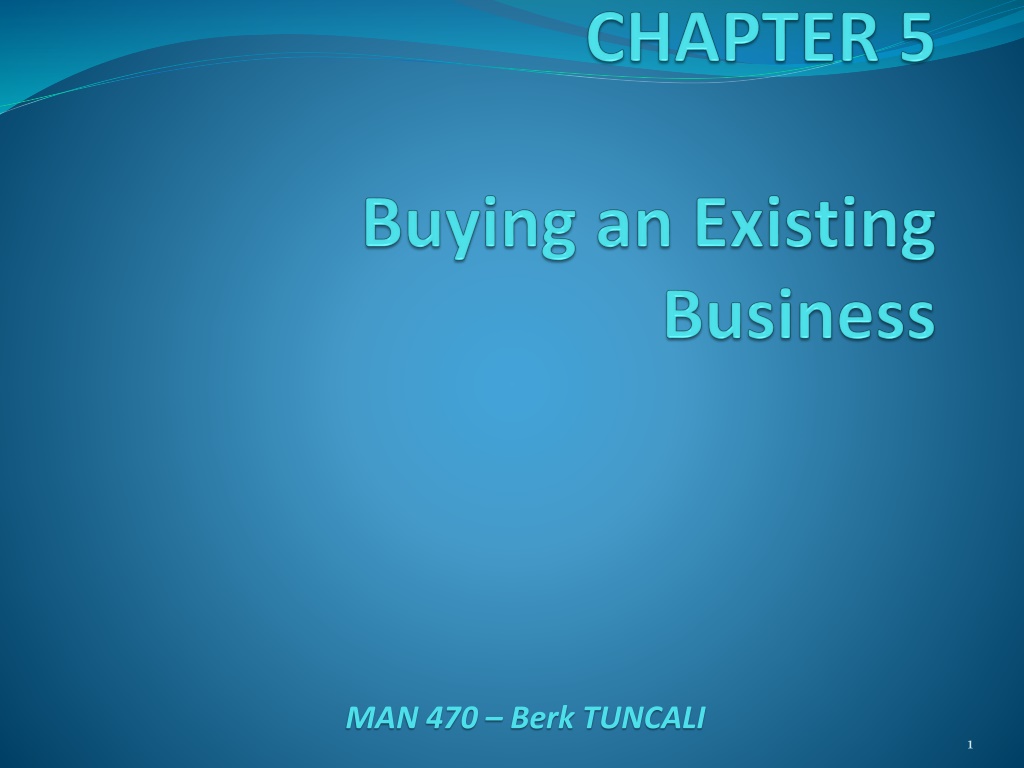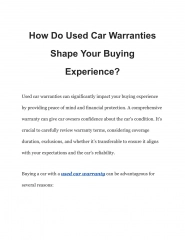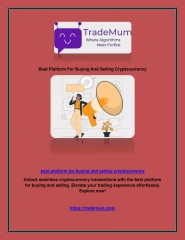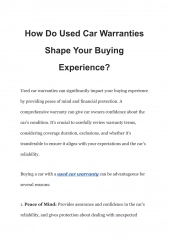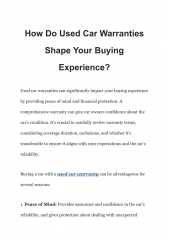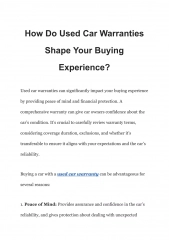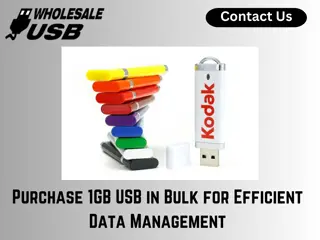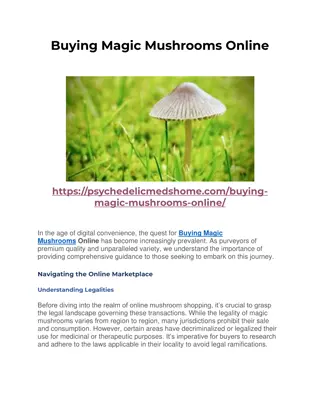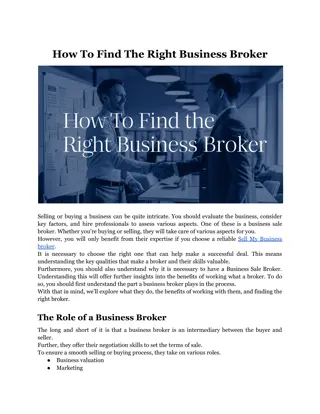Consider Buying an Existing Business
"Advantages and disadvantages of purchasing an existing business, steps involved in acquiring a business, and analyzing skills and interests for successful entrepreneurship."
Download Presentation

Please find below an Image/Link to download the presentation.
The content on the website is provided AS IS for your information and personal use only. It may not be sold, licensed, or shared on other websites without obtaining consent from the author. Download presentation by click this link. If you encounter any issues during the download, it is possible that the publisher has removed the file from their server.
E N D
Presentation Transcript
Things to consider; Each year more than 500,000 businesses are bought and sold in the US Due diligence is just as time consuming as a business plan for a start up business Is this a good way? What do you think? 2
Advantages of Buying an Existing Business A successful existing business may continue to be successful May already have the best location (Location, location location) Employees and suppliers are established Equipment is installed and productive capacity is known 3
Advantages of Buying an Existing Business Inventory is in place and trade credit is established Business owner hits the ground running (saves time, cost and energy) New owner can use the experience of the previous owner Easier financing (usuallyeasiersince there is something to show for the investment not just a business plan) It s a bargain (may need to sell in a rush) 4
Disadvantages of Buying an Existing Business Previous owner may have created ill will (socially negative company) It s a loser (never profited) Employees inherited with the business may not be suitable The business location may have become unsatisfactory Equipment and facilities may be obsolete or inefficient 5
Disadvantages of Buying an Existing Business Change and innovation are difficult to implement Inventory may be outdated or obsolete Accounts receivable may be worth less than face value Business may be overpriced 6
STEPS IN AQUIRING A BUSINESS Analyze your skills, abilities and interests 1. 2. Prepare a list of potential candidates 3. Investigate those candidates 4. Explore financing options 5. Ensure smooth transition 7
Analyze your skills, abilities and interests What business activities do you enjoy most? Why? Which markets offer the greatest potential for growth? What do you expect to get out of the business? How much time, energy and money can you put into the business? What business skills and experience do you have? How much risk are you willing to take? What size company do you want to buy? Is there are particular geographic location you desire? 8
Prepare a list of potential candidates Bankers (ask them they might now companies whoare in f nancial troubleand looking to exit.) Accountants Investment bankers Suppliers/distributors/customers Networking social and business contacts Newspapers , internet and trade journals listing businesses for sale Knocking on the doors of businesses even if they are not advertised as being for sale 9
Hidden Market: Low profile companies that might be for sale but are not advertised as such. 10
Investigate Candidate Businesses What are the company strengths and weaknesses (SWOT analysis) Is the company profitable? What is the overall financial condition? What is the cash flow cycle? How much cash will the company generate? Who are the major competitors? How large is the customer base? Is it growing or shrinking? Are the current employees suitable? Will they stay? What is the physical condition of the business, equipment and the inventory? 11
Explore financing options Putting a price on an existing business is hard (good will hava paras ) Seller will be likely to provide financing options- eg. Down payment with installements Ensure smooth transition There are always surprises Concentrate on communicating with employees Be honest with employees Listen to employees Consider asking the seller to provide a limited consultation period 12
Evaluating an Existing Business The Due Diligence Process Why does the owner want to sell? 1. 2. What is the physical condition of the business 3. What is the potential for the company s products or services? 4. What legal aspects should you consider? 5. Is the business financially sound? 13
Why does the owner want to sell? Every prospective business buyer should investigate the real reason the business owner wants to sell! Most common reason for selling is boredom and burnout! Might sell because a new powerful competitor will enter the market soon Businesses do not last forever. The owner might have seen that the end is near. 14
Condition of the Business What is the physical condition of the business? Accounts receivable Lease arrangements Business records (can be a valuablesource into the business in detail) Intangible assets (does the sale include any intangibles?) Location and appearance (check for its suitability several years in the future any new buildings planned) 15
Products and Services What is the potential for the company s product or services Customer characteristics (Whoare the customers? Whydo they buy? What are their needs, how often they buy? How loyal are they?) Competitor analysis (Which ones have survived and why? How are theirsalesvolumes? How well are theyorginzied? Whatare their reputations? Strengths and weaknesses? What competitive edge do they have?) 16
Legal Aspects There are several traps and pitfalls when legal aspects are in question. These are; Liens: a creditor s claim against an asset. (To avoid it, buyers usually include a clause in the agreement thatanything not shown on the balance sheet is the responsibility of the seller) Bulk Transfer: protects the buyer of a business s assets from the claims unpaid creditors might have against these assets. (if the seller owes money to creditors and does not pay with the money acquired from the sale of the business, then thecreditors will be able to sell the assets of the business and get their money) Due-on-sale clause: loan contract provision that prohibits a seller from assigning a loan arrangement to the buyer. Instead, the buyer is required to finance the remaining loan balance at prevailing interest rates. Restrictive Covenant: an agreement between a buyer and a seller in which the seller agrees not to compete with the buyer within a specific time period and geographic area. 17
Financial soundness of the Business Income statement and balance sheet for the past 3-5 years Income tax returns for the past 3-5 years Owners compensation Skimming: Taking money from sales without reporting it as income. 18
Determining the value of a Business 1-) Balance Sheet Technique: a method of valuing a Business based on the value of the company s net worth (net worth = total assets total liabilities) a) Adjusted Balance Sheet Technique: a method of valuing a business based on the market value of the company s net worth (net worth = total assets total liabilities) 19
Determining the value of a Business 2-) Earnings Approach: a method of valuing a business that recognizes that a buyer is purchasing the future income (earnings) potential of a business. Excess Earnings Approach: combines thevalues of businesses existing assets and an estimateof its futureearnings potential. a) Capitalized Earnings Approach: a method of valuing a business that divides estimated earnings by the rate of return the buyer could earn on a similar risk investment. (oppurtunitycostalternative) b) Discounted Future Earnings Approach: a method of valuing a business that forecasts a company s earnings several years into the future and then discounts them back to their present value. (time valueof money Dollartoday is betterthan a Dollar tomorrow) c) 20
Determining the value of a Business 3-) Market Approach: a method of valuing a business that uses the price/earnings ratio if similar, publicly held companies to determine value. 21
Understanding the Sellers Side Structuring the deal minimize legal costs Exit strategy options; a) Straight business sale b) Form a family limited partnership (transfer tochildren) c) Sell a controlling interest (still make money but no control a little like retirement) d) Restructure the company (form a new business and and make a leveraged buyoutwith an investor) e) Sell to an international buyer (chance for foreigncompetitors to move in) f) Use a two step sale (buys between 20-70% at the start and gets the rest in the specified time period) g) Establish an employee stock ownership plan (ESOP) 22
Negotiating the Deal Get the highest price possible Sever all responsibility for the company s liabilities Avoid unreasonable contract terms Maximize the cash gotten from the deal Minimize the tax burden Make sure the buyer will be able to make all the future payments 23
THANK YOU 24
